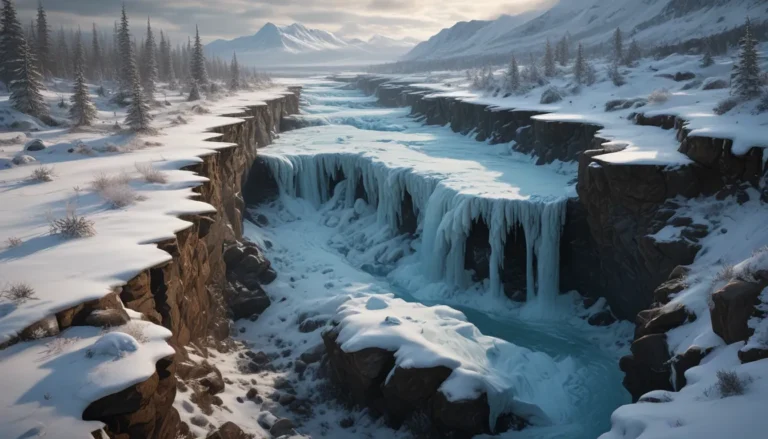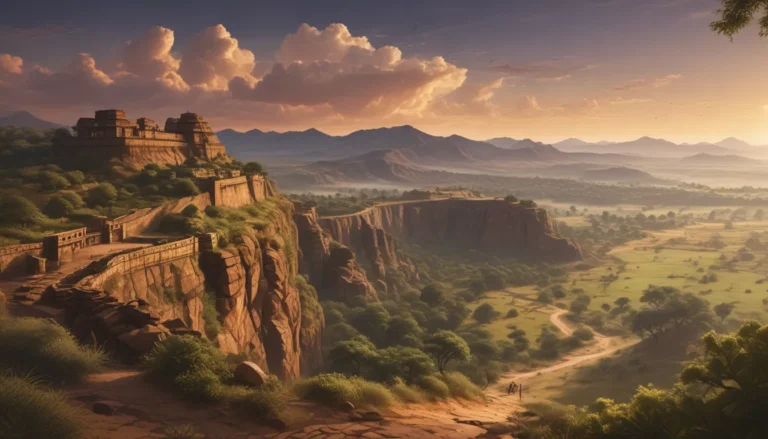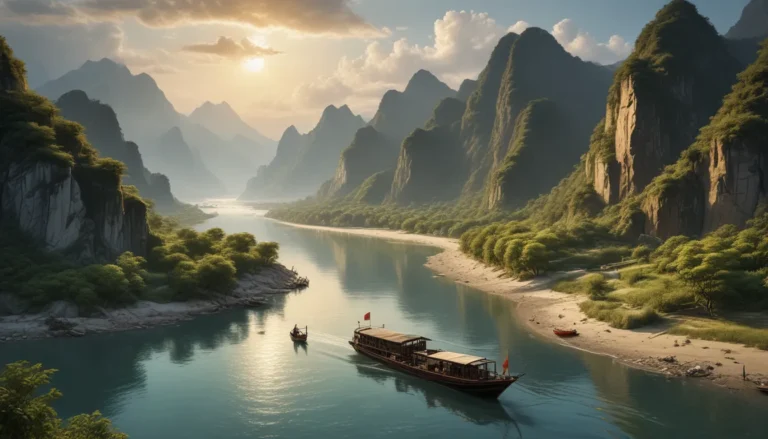A Note About Images: The images used in our articles are for illustration purposes only and may not exactly match the content. They are meant to engage readers, but the text should be relied upon for accurate information.
Welcome to the mesmerizing world of watersheds, where nature’s intricate networks shape our landscapes and sustain life as we know it. From the smallest streams to the grandest river basins, each watershed plays a pivotal role in maintaining ecological balance and supporting various habitats around the globe. In this enlightening article, we will explore 19 captivating facts about watersheds that will deepen your knowledge and appreciation for these essential natural systems.
The Essence of Watersheds: Earth’s Natural Plumbing System
- Watersheds act as Earth’s natural plumbing system, collecting and channeling water to rivers, lakes, and oceans.
- They play a vital role in providing clean drinking water and supporting diverse habitats for plants and animals.
- Protecting watersheds is crucial for preventing floods, preserving water quality, and sustaining agricultural productivity.
Discovering the Diversity of Watersheds
- A watershed, also known as a drainage basin or catchment area, collects and channels water into a common outlet, such as a river, lake, or ocean.
- Watersheds come in various sizes, from local ones covering a few square miles to massive ones spanning thousands of square miles on every continent.
The Ecological Significance of Watersheds
- Watersheds maintain water quality, regulate flow, replenish groundwater, and provide diverse habitats for plant and animal species.
- The size of a watershed influences its water flow and drainage characteristics, impacting its response to rainfall events.
The Interplay of Natural and Human Factors
- Natural factors like climate, topography, and vegetation, as well as human factors such as land use and urban development, influence watersheds.
- Watersheds can be classified into oceanic, river, lake, and underground types, each with unique characteristics.
Ensuring Clean Drinking Water and Flood Mitigation
- Water from rivers and lakes within watersheds serves as a source of drinking water for nearby communities.
- Healthy watersheds can mitigate flooding by acting as natural reservoirs and absorbing excess water.
The Interconnected Nature of Watersheds
- Water from one watershed can impact downstream watersheds, emphasizing the need for integrated and collaborative management.
- Watersheds support a variety of recreational activities, offering opportunities for boating, fishing, hiking, and wildlife viewing.
Conservation Efforts and Ecosystem Protection
- Human activities like agriculture and industrial processes can introduce pollutants into watersheds, affecting water quality and ecosystems.
- Proper land management practices, such as sustainable agriculture and erosion control, are crucial for watershed conservation.
Sustainable Agriculture and Economic Contributions
- Watersheds support diverse aquatic ecosystems, providing habitat for microorganisms, fish species, and other marine life.
- Some watersheds are designated as protected areas, including national parks and wildlife refuges, to safeguard their ecosystems.
Impact of Climate Change and Urbanization
- Climate change can alter precipitation patterns and temperatures, impacting water availability and management in watersheds.
- Urbanization can disrupt natural water balance in watersheds through increased impervious surfaces and rapid runoff.
Collaboration for Effective Watershed Management
- Successful watershed management requires collaboration among government agencies, communities, and environmental organizations.
- Industries such as fishing, tourism, and hydroelectric power generation rely on healthy and well-managed watersheds for economic contributions.
Embracing Watersheds: A Call to Action
Watersheds are essential for sustaining life and supporting ecosystems worldwide. By understanding and protecting these valuable resources, we can ensure a sustainable future for our planet. From responsible land use to water management practices, each action taken contributes to the preservation of watersheds for future generations.
FAQs: Exploring Watersheds Further
- What is a watershed? A watershed refers to an area of land where all rainfall and snowmelt flow into a common river or lake, forming the starting point for a river system.
- How do watersheds affect water quality? Watersheds act as filters, removing pollutants and impurities from water as it flows to rivers, lakes, and groundwater sources.
- Are watersheds only found near large bodies of water? No, watersheds exist in regions with precipitation, ranging from coastlines to inland areas, including small streams and creeks.
- Can human activities impact watersheds? Yes, human activities such as deforestation, urbanization, and pollution can disrupt water flow, degrade water quality, and harm ecosystems.
- How can we protect and conserve watersheds? Implementing sustainable land use practices, reducing pollution, restoring wetlands, and promoting water conservation are key steps in preserving watersheds.
Conclusion: A Journey Through the Magnificence of Watersheds
Watersheds weave a tapestry of life, connecting ecosystems and communities in a delicate balance. By embracing the wonders of watersheds and committing to their conservation, we play a vital role in safeguarding our planet’s future. Let us continue to explore, learn, and protect the invaluable resources that watersheds provide, ensuring a flourishing environment for generations to come.
Dive Deeper into Watersheds!
If you found these facts about watersheds intriguing, delve further into watershed divides, complexities, and management practices. Explore the interconnected nature of water systems and the significance of conservation efforts in preserving our precious watersheds.






